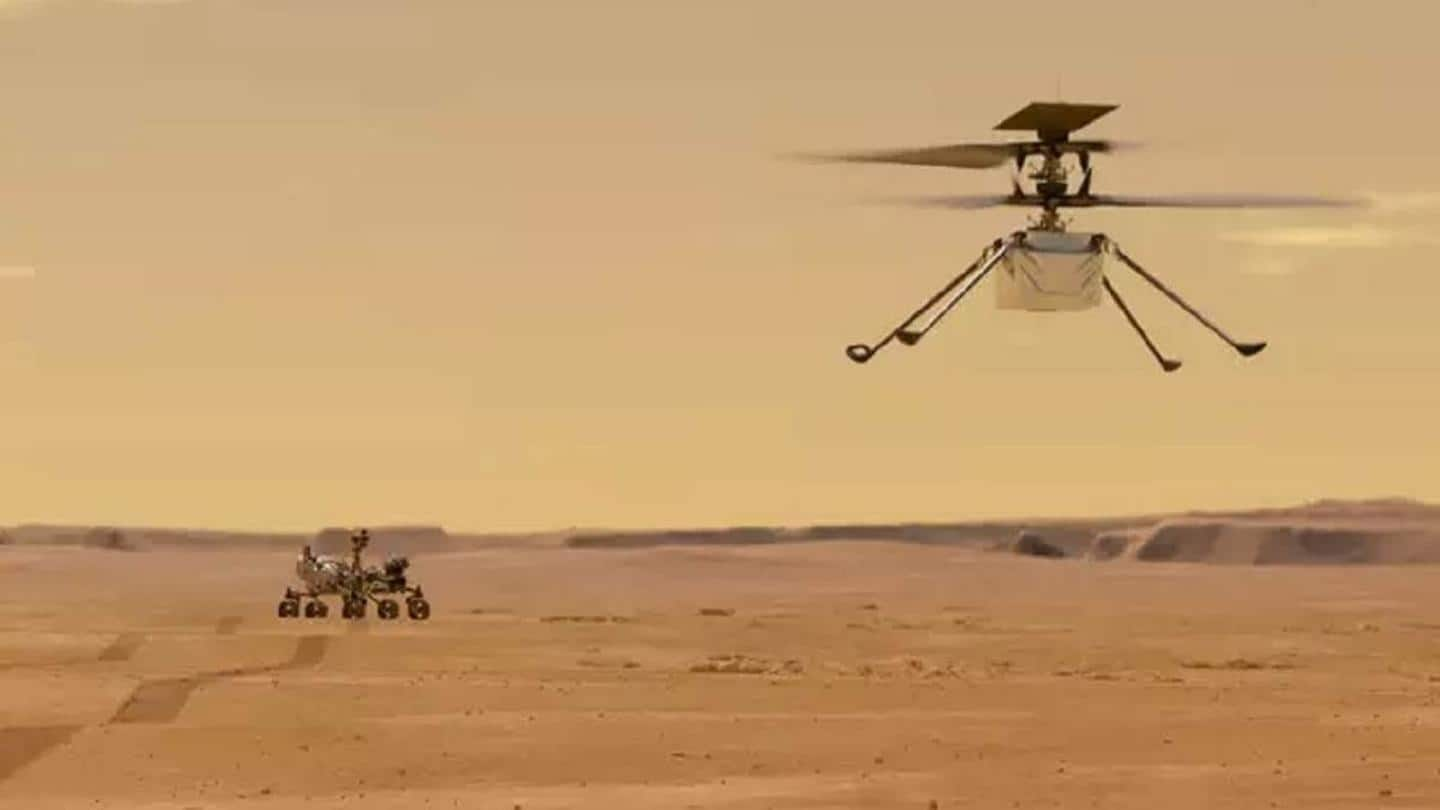
NASA's Ingenuity helicopter now one step closer to first flight
What's the story
Over the weekend, NASA's Perseverance rover dropped the debris shield that protected the Ingenuity helicopter during the rover's historic landing on the red planet.
NASA Jet Propulsion Laboratory's (JPL) lead engineers for the Ingenuity mission, Farah Alibay and Timothy Canham said the helicopter has cleared all the system checks prior to its first powered flight.
For now, the helicopter remains attached to Perseverance's underbelly.
Twitter Post
Perseverance Rover tweets updates regarding the Ingenuity helicopter
Away goes the debris shield, and here’s our first look at the helicopter. It’s stowed sideways, folded up and locked in place, so there’s some reverse origami to do before I can set it down. First though, I’ll be off to the designated “helipad,” a couple days’ drive from here. pic.twitter.com/E9zZGQk5jQ
— NASA's Perseverance Mars Rover (@NASAPersevere) March 21, 2021
First powered flight
Ingenuity would be first rotorcraft to fly on another planet
For the uninitiated, Ingenuity is a technology demonstrator sent to Mars with the intention to test powered flight on the red planet.
If Ingenuity successfully flies in the Martian atmosphere, it will become the first rotorcraft to have flown on another planet.
The helicopter weighs 1.8 kilograms and will make its maiden flight no later than April 18, the team has said.
Flight plan
Successful takeoff, landing would accomplish 90 percent of Ingenuity's goals
During its first flight, Ingenuity will reportedly reach an altitude of three meters from the ground. It will then hover there for about 20 seconds.
According to an earlier statement from NASA, a successful takeoff and landing during its first flight will accomplish 90 percent of the goals set for the Ingenuity mission.
Most of the rover's components including its batteries are off-the-shelf parts.
Do you know?
Density of Martian atmosphere poses a challenge to Ingenuity
The Martian atmosphere is roughly 100 times thinner (less dense) than Earth. So, Ingenuity will have to work much harder than a similar device operating in Earth's atmosphere. It cost around $80 million to build the Ingenuity helicopter.
Making Mars home
Ingenuity is accompanied by MOXIE, an experimental oxygen generator
The rotorcraft was named "Ingenuity" by Alabama student Vaneeza Rupani who won NASA's naming contest. The name for the rover was also chosen similarly.
Ingenuity is accompanied by another technology demonstrator dubbed MOXIE (Mars Oxygen In-Situ Resource Utilization Experiment). It generates oxygen from the Martian environment primarily composed of Carbon dioxide.
NASA said scaled-up versions of MOXIE could help sustain human life on Mars.
Signs of life
Ingenuity will use its own solar arrays to recharge
Ingenuity has been charging its batteries using Perseverance's electronics, but it will use its own solar arrays after the first test flight.
After Ingenuity's first few flights, the Perseverance rover will continue scouring Mars for signs of life.
Observations made by Mars orbiters suggest that Perseverance's landing site, the Jezero crater, could have been a lake and river delta billions of years ago.